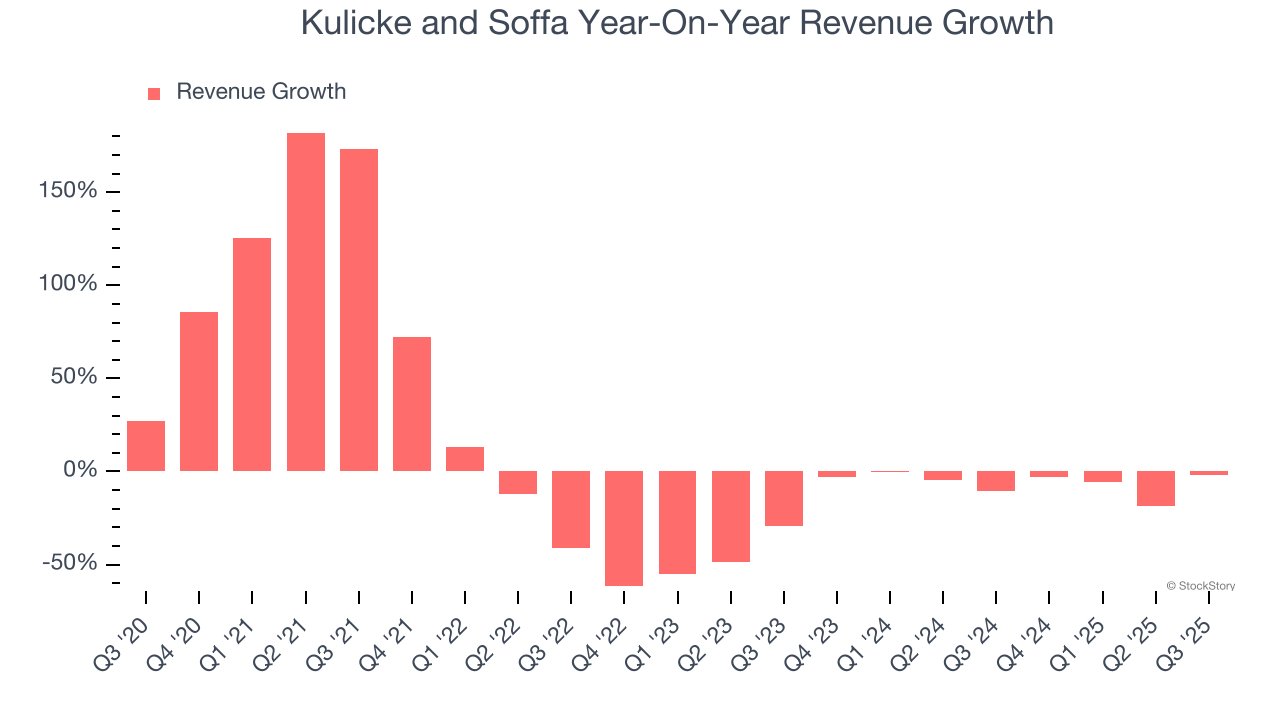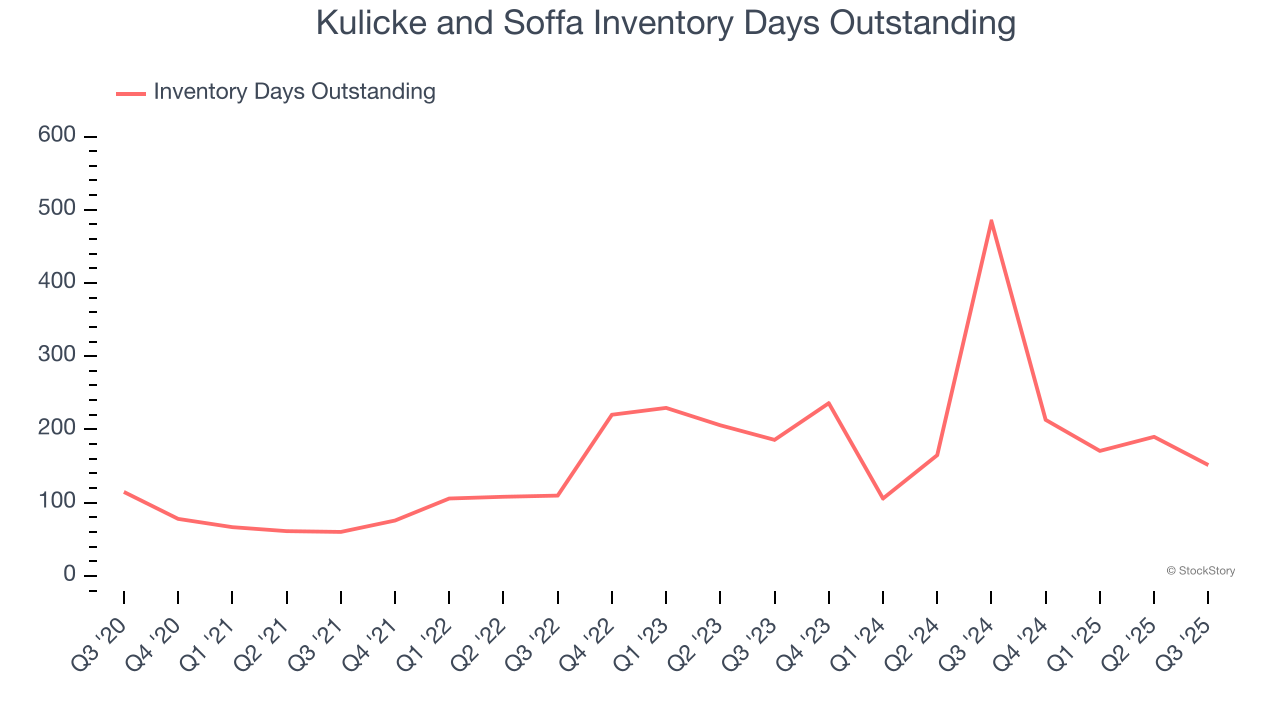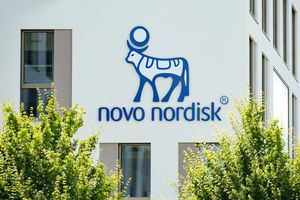
Semiconductor production equipment company Kulicke & Soffa (NASDAQ: KLIC) reported revenue ahead of Wall Streets expectations in Q3 CY2025, but sales fell by 2.1% year on year to $177.6 million. On top of that, next quarter’s revenue guidance ($190 million at the midpoint) was surprisingly good and 13.3% above what analysts were expecting. Its non-GAAP profit of $0.28 per share was 26.1% above analysts’ consensus estimates.
Is now the time to buy Kulicke and Soffa? Find out by accessing our full research report, it’s free for active Edge members.
Kulicke and Soffa (KLIC) Q3 CY2025 Highlights:
- Revenue: $177.6 million vs analyst estimates of $170 million (2.1% year-on-year decline, 4.4% beat)
- Adjusted EPS: $0.28 vs analyst estimates of $0.22 (26.1% beat)
- Adjusted Operating Income: $11.79 million vs analyst estimates of $11.56 million (6.6% margin, 2% beat)
- Revenue Guidance for Q4 CY2025 is $190 million at the midpoint, above analyst estimates of $167.7 million
- Adjusted EPS guidance for Q4 CY2025 is $0.33 at the midpoint, above analyst estimates of $0.23
- Operating Margin: 0.5%, in line with the same quarter last year
- Free Cash Flow Margin: 2.5%, down from 16.1% in the same quarter last year
- Inventory Days Outstanding: 151, down from 190 in the previous quarter
- Market Capitalization: $1.85 billion
Lester Wong, Kulicke & Soffa's Interim Chief Executive Officer and Chief Financial Officer, stated, "We continue to focus on multiple technology engagements and are increasingly encouraged by improving end market dynamics and order activity. Our global operations and supply chain teams are preparing for increased customer demand over the coming quarters."
Company Overview
Headquartered in Singapore, Kulicke & Soffa (NASDAQ: KLIC) is a provider of production equipment and tools used to assemble semiconductor devices
Revenue Growth
A company’s long-term sales performance is one signal of its overall quality. Any business can put up a good quarter or two, but the best consistently grow over the long haul. Unfortunately, Kulicke and Soffa struggled to consistently increase demand as its $654.1 million of sales for the trailing 12 months was close to its revenue five years ago. This wasn’t a great result and suggests it’s a low quality business. Semiconductors are a cyclical industry, and long-term investors should be prepared for periods of high growth followed by periods of revenue contractions.

Long-term growth is the most important, but short-term results matter for semiconductors because the rapid pace of technological innovation (Moore's Law) could make yesterday's hit product obsolete today. Kulicke and Soffa’s recent performance shows its demand remained suppressed as its revenue has declined by 6.1% annually over the last two years. 
This quarter, Kulicke and Soffa’s revenue fell by 2.1% year on year to $177.6 million but beat Wall Street’s estimates by 4.4%. Despite the beat, the drop in sales could mean that the current downcycle is deepening. Company management is currently guiding for a 14.4% year-on-year increase in sales next quarter.
Looking further ahead, sell-side analysts expect revenue to grow 11.1% over the next 12 months, an improvement versus the last two years. This projection is above the sector average and suggests its newer products and services will fuel better top-line performance.
Software is eating the world and there is virtually no industry left that has been untouched by it. That drives increasing demand for tools helping software developers do their jobs, whether it be monitoring critical cloud infrastructure, integrating audio and video functionality, or ensuring smooth content streaming. Click here to access a free report on our 3 favorite stocks to play this generational megatrend.
Product Demand & Outstanding Inventory
Days Inventory Outstanding (DIO) is an important metric for chipmakers, as it reflects a business’ capital intensity and the cyclical nature of semiconductor supply and demand. In a tight supply environment, inventories tend to be stable, allowing chipmakers to exert pricing power. Steadily increasing DIO can be a warning sign that demand is weak, and if inventories continue to rise, the company may have to downsize production.
This quarter, Kulicke and Soffa’s DIO came in at 151, which is 10 days below its five-year average. At the moment, these numbers show no indication of an excessive inventory buildup.

Key Takeaways from Kulicke and Soffa’s Q3 Results
We were impressed by Kulicke and Soffa’s strong improvement in inventory levels. We were also glad its EPS outperformed Wall Street’s estimates. Zooming out, we think this was a solid print. The stock traded up 2.8% to $36.26 immediately following the results.
Indeed, Kulicke and Soffa had a rock-solid quarterly earnings result, but is this stock a good investment here? We think that the latest quarter is only one piece of the longer-term business quality puzzle. Quality, when combined with valuation, can help determine if the stock is a buy. We cover that in our actionable full research report which you can read here, it’s free for active Edge members.






